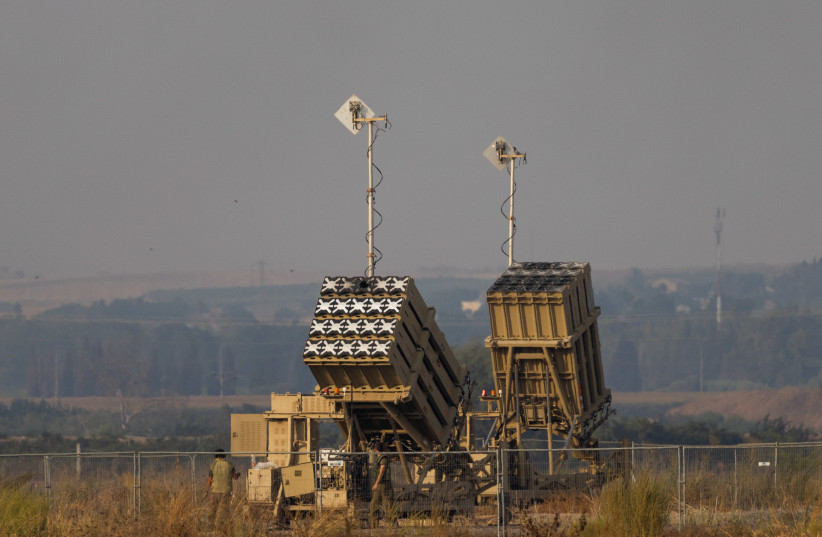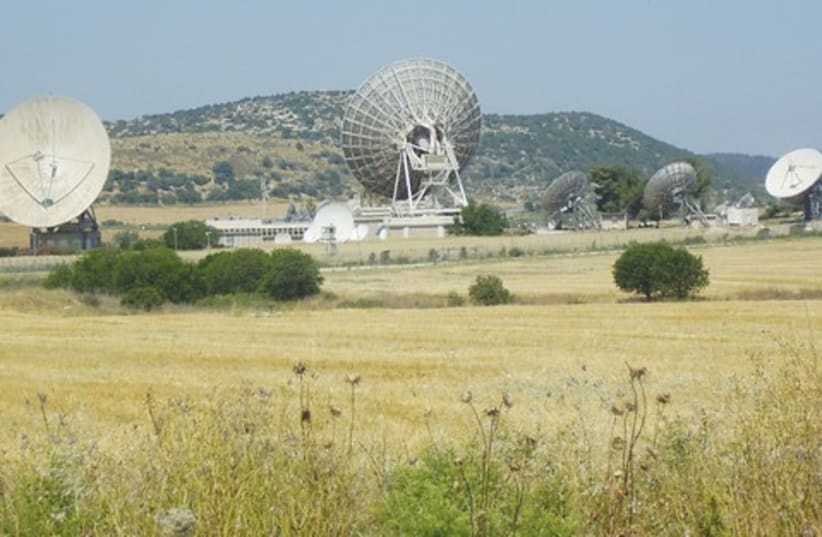The IDF on Monday rejected allegations in multiple prominent journal publications saying that its soldiers who work in close proximity to Iron Dome and other radar instruments have a higher risk of cancer.
The Jerusalem Post has learned that the IDF view is that despite the prominence of the publications, they lack the vastly larger data that the IDF possesses to perform comparisons between those who say they were harmed and “control” subjects.
Whereas the civilian journal publications compare dozens of cancer patients allegedly harmed by their IDF service with Iron Dome and other radars systems to the civilian populations, the IDF has the benefit of comparing the dozens of individuals in question to thousands of IDF personnel who served at similar bases as those with cancer, but who did not deal directly with the same radar systems.
Other controversial radar systems include Hawk missiles, David’s sling batteries, Arrow missiles and patriot batteries.
In addition, the IDF said that its conclusions have the support of officials from the Israeli Health and Environmental Ministries and the IDF comptroller, who often criticizes various IDF deficiencies.


The IDF will publish own study
Further, the Post learned that the IDF will be publishing its own much larger study of the issue later in 2023 in the journal of Military Medicine.
The IDF’s study is based on data collected from soldiers between 2009-2018, which the IDF did acknowledge will require reevaluation once 15 years has passed since symptoms can easily take 15 year to present themselves.
Soldiers claiming injury first got a boost from a scientific study in 2018.
That study dealt with 47 individuals, and the latest study from last week dealt with a new group of 46 individuals, to show that the issue continues and has not improved.
IDF personnel who work in close contact with high-intensity, whole-body, radio-frequency radiation (RFR) radar might face significant risk of getting hematolymphoid and other cancers, according to a new study led by Israeli researchers.
Prof. Michael Peleg of Haifa’s Technion-Israel Institute of Technology and Prof. Elihu Richter and Prof. Elliot Berry of the Hebrew University-Hadassah School of Public Health and Community Medicine and colleagues asserted that measures to protect soldiers from exposure to radar and monitoring their health was vital, even a decade after they leave this job.
Hematolymphoid neoplasms (abnormal growth of cells) include non-Hodgkin’s lymphoma, chronic lymphocytic leukemia, acute lymphoblastic leukemia, Burkitt’s lymphoma, intravascular lymphoma, Hodgkin lymphoma and chronic myeloid leukemia.
The study
The researchers published their study titled “On radar and radio exposure and cancer in the military setting” in the peer-reviewed journal Environmental Research in October with a parallel publication appearing on the National Library of Medicine website last week.
Some of the soldiers who have contracted cancer filed for recognition as injured soldiers in war, along with financial and health benefits.
After the Defense Ministry rejected their claims, in May 2022, lawyer Ran Cohen filed an appeal to a civilian court on behalf of some of the claimants to try to override the ministry.
Cohen said that there is a hearing regarding the case at the end of next week which may give some more hints where the claim will lead.
A finding of a civil court against the IDF could be a game-changer.
Both sides have also questioned some of the motives of each side, with IDF officials noting that there is a major financial gain to be made by victims, regardless of whether the research their claims are based on are up to usual control group standards.
For one, the IDF is not ready to agree that even all of the data collected by the critical journal articles is correct, arguing that one article says there were 250 persons serving at a specific point with Iron Dome, whereas an IDF review with the relevant commanders found that the numbers were much smaller.
If true, this would mean that the math in the ratio analysis of sick persons to healthy persons would be off.
On the flip side, the esteemed academics criticizing the IDF on the issue imply that it is sticking its head in the sand to avoid paying large bills.
Among the recommendations of the various prominent journal articles are to set an exposure threshold, considering the reported biological effects of low-level RFR and the RFR levels really needed for equipment function; increase the distance between personnel and transmitters; and use antenna patterns with low side lobes (antenna lobes) to reduce exposure.
Additional recommendations include, where applicable, inserting a high metal fence, acting as a Faraday shield between a powerful transmitter and the soldiers; covering buildings and tents with thin metal sheets, functioning as Faraday shields, or incorporate such sheets in new relevant constructions; supplying soldiers with RFR-protective clothing, including protection of the head and neck; and providing information to personnel about the carcinogenicity of RFR to motivate adherence to safety rules.
Final recommendations include informing military physicians of the need to be aware of the cancer risk from RFR and methods for monitoring, detection and prevention; and carrying out periodical medical surveillance, including regular blood tests and screening for cancer and other RFR-related health effects. The authors said such checkups should continue at least 10 years after release from military service.
Faraday shields offer protection against electromagnetic radiation coming from the external environment or prevent electromagnetic energy radiated from the internal components from escaping the cage. These protective shields are used in different kinds of electronic and electrical equipment.
The IDF’s view would be that the Iron Dome and other radar systems only emit dangerous radiation in one direction.
Given that the IDF has fenced off those areas so that soldiers cannot physically get to those areas, it believes that the other measures are unnecessary.
Judy Siegel-Itzkovich contributed to this report.
